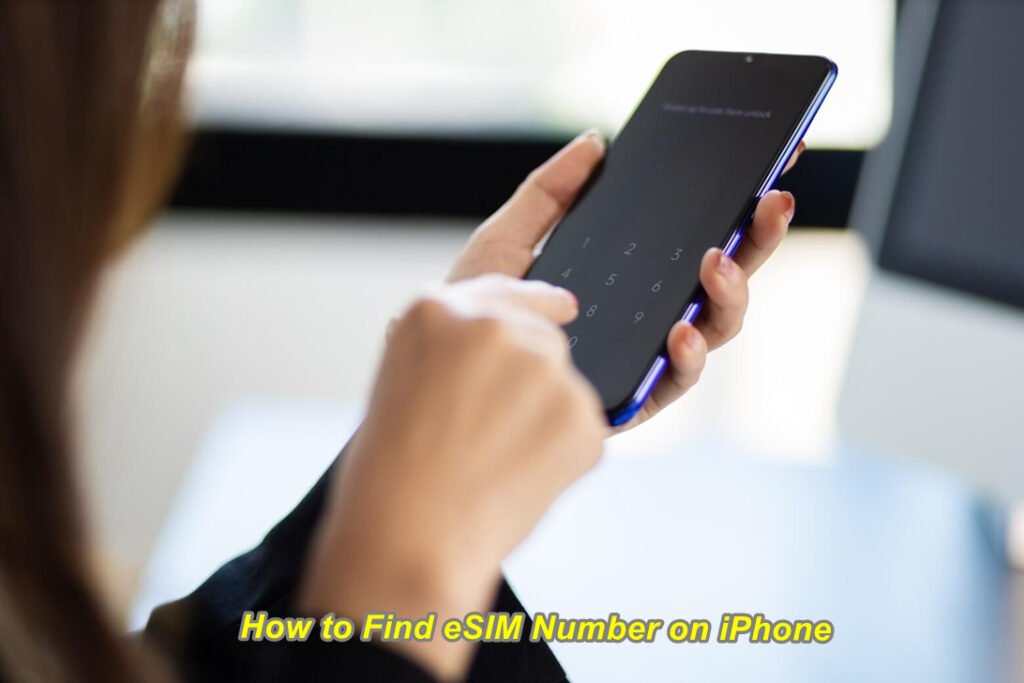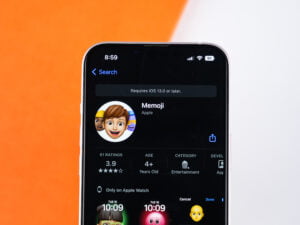Looking to find the eSIM number on your iPhone? Understanding the significance of locating IMEI numbers for T-Mobile and eSIM is essential for troubleshooting, carrier activation, and device security.
But where do you find these crucial numbers? Don’t fret! We’ve got you covered. Whether you need it for carrier activation or managing your devices’ profiles, knowing how to find these numbers is key.

Differentiating between Physical IMEI and eSIM IMEI Numbers
Understanding the Difference
It’s important to distinguish between the IMEI number of a physical SIM card and the unique identifier of an eSIM in a mobile smartphone. Follow the previous iPhone’s instructions. The physical SIM card in a mobile device, such as the previous iPhone, has its own distinct IMEI number.
This 15-digit code is used to hide phone number and is used for carrier activation. It can be found in the device’s instructions. On the other hand, eSIM (embedded SIM) technology enables carrier activation and allows you to activate a mobile cellular plan without using a physical SIM card or phone number. The eSIM also has its own unique IMEI number.
Importance of Distinguishing
Distinguishing between these two types of IMEIs is crucial for effectively managing your mobile phone’s connectivity and carrier activation. Knowing which IMEI belongs to which type of SIM card allows you to troubleshoot mobile phone number and carrier activation issues accurately and make changes accordingly.
For instance, if you’re experiencing connectivity problems with your physical SIM card or need assistance with carrier activation, having access to its specific IMEI and phone number will help you address any network-related concerns or even report a lost or stolen device.
Role in Managing Connectivity
Both the physical SIM card’s IMEI and the eSIM’s unique identifier play vital roles in managing your phone’s connectivity. Here’s how they come into play:
- Activation: When activating a new cellular plan on your iPhone, whether it uses a physical SIM or an eSIM, each one will have its own corresponding IMEI.
- Switching Plans: If you decide to switch from using a physical SIM card to an eSIM or vice versa, understanding their respective IMEIs will aid in seamless transition and activation.
- Troubleshooting: In case of network issues or troubleshooting needs, knowing which type of SIM card has what IMEI enables you to isolate problems more efficiently.
Finding Your Phone’s eSIM IMEI Number
To find your phone’s eSIM IMEI number quickly, there are several methods you can explore. Let’s dive into the specific settings where you can locate this unique identifier and discover how easy it is to access this information directly from your iPhone.
Using the Phone Settings
- Open the “Settings” app on your iPhone.
- Scroll down and tap on “General.”
- Tap on “About.”
- Look for the “IMEI” or “ICCID” option, which will display your eSIM IMEI number.
- Note down the 15-digit number provided as it is your phone’s eSIM IMEI number.
Checking the SIM Card Tray
- Locate the SIM card tray slot on your iPhone.
- Use a SIM eject tool or a paperclip to gently remove the tray.
- Take out the SIM card from the tray.
- On some iPhones, you may find the eSIM IMEI number printed directly on the tray itself.
- If you don’t see it there, check for any labels or markings inside the empty SIM card slot that indicate the eSIM IMEI number.
Scanning QR Code
- Open the “Settings” app on your iPhone.
- Tap on “Cellular” or “Mobile Data.”
- Select “Add Cellular Plan.”
- Scan the QR code provided by your carrier using your iPhone’s camera.
- The QR code contains all necessary information about your eSIM, including its IMEI number.
Finding your phone’s eSIM IMEI number doesn’t have to be a complex task; with these methods, you can easily access this crucial identifier directly from your device settings or physical components like SIM card trays and QR codes.
Step-by-Step Guide: How to Find Your eSIM IMEI Number on iPhone
Follow a Simple Method
Finding your eSIM IMEI number on your iPhone is easier than you might think. Just follow these simple steps:
- Open the Settings app on your iPhone.
- Scroll down and tap on “General.”
- In the General menu, tap on “About.”
- Scroll down until you find the entry labeled “IMEI.” Tap on it.
Detailed Instructions with Screenshots
To make things even simpler for you, here are some detailed instructions accompanied by screenshots for each stage of the process:
- After opening the Settings app, locate and tap on the “General” option.
- Within the General menu, scroll down until you see “About” and tap on it.
- Keep scrolling until you find the entry labeled “IMEI” – this is where your eSIM IMEI number is displayed.
Master the Technique in Minutes
Regardless of your technical expertise, you can master this technique within minutes! It’s designed to be user-friendly and straightforward, ensuring that anyone can easily locate their eSIM IMEI number without any hassle.
Remember, having access to your eSIM IMEI number is essential for various purposes like activating or troubleshooting your eSIM service.
Now that you know how to find your eSIM IMEI number effortlessly, go ahead and give it a try!
Understanding the Importance of SIM Number for eSIM on Auckland Network
To fully grasp the significance of having a SIM number when using an eSIM on the Auckland Network, it’s essential to understand how this number facilitates seamless connectivity in New Zealand. Let’s delve into why having a SIM number is crucial and explore the benefits it offers.
Recognize Why Having a SIM Number is Crucial
Having a SIM number associated with your eSIM is vital because it serves as a unique identifier for your device on the network. This number acts as a digital signature, allowing the network to recognize and authenticate your device. Without a valid SIM number, your eSIM would not be able to establish a secure connection with the Auckland Network.
Gain Insights into Seamless Connectivity
By having a SIM number linked to your eSIM, you can enjoy uninterrupted connectivity on the Auckland Network. This means you can make calls, send text messages, access mobile data, and hide phone number without any disruptions. The SIM number ensures that your device is properly registered on the network, enabling it to communicate seamlessly with other devices and services.
Learn about Benefits and Advantages
Having a SIM number associated with your eSIM opens up several benefits and advantages. Here are some key ones:
- Convenience: With an eSIM and its corresponding SIM number, there’s no need to physically insert or swap physical SIM cards when changing networks or traveling abroad.
- Flexibility: You can easily switch between different mobile operators or plans by simply updating the settings on your device.
- Dual-SIM Capability: Some devices support dual-SIM functionality, allowing you to have two active phone numbers simultaneously.
- Enhanced Security: The use of a unique SIM number adds an extra layer of security to your device and helps protect against unauthorized access.
Exploring Methods to Find Your SIM Number for eSIM on Auckland Network
To find your SIM number specifically tailored for an Auckland Network eSIM user, there are multiple methods you can try. Each method involves accessing different settings, menus, or apps that provide access to this vital information. Let’s explore these options and find the one that suits your preferences.
Method 1: Settings Menu
- Open the “Settings” app on your iPhone.
- Scroll down and tap on “General.”
- Select “About” from the list.
- Look for the “ICCID” or “SIM Card Number” section.
- The number displayed here is your SIM number for the eSIM on the Auckland Network.
Method 2: Cellular Data Settings
- Go to the “Settings” app on your iPhone.
- Tap on “Cellular.”
- Choose “Cellular Plans.”
- Locate the eSIM plan associated with your Auckland Network.
- The SIM number should be displayed next to or under the plan details.
Method 3: Carrier App
- If you have installed a carrier-specific app, open it.
- Look for a section related to your account or plan details.
- Within this section, you should find information about your SIM number.
Now that you know three different methods to retrieve your SIM number for an eSIM on the Auckland Network, give them a try and see which one works best for you! Remember, having easy access to this information is crucial when activating or managing your eSIM.
Transferring a Physical SIM or eSIM to an eSIM on a New iPhone
It’s essential to understand the steps involved in migrating your existing connectivity to the new device. By following these instructions, you can ensure a quick transfer without any hassle.
Steps for Transferring Your Connectivity:
- Contact Your Carrier: Get in touch with your carrier’s support team and inform them about your intention to switch from a physical SIM or eSIM to an eSIM on your new iPhone. They will guide you through the process and provide any necessary assistance.
- Install Carrier App: If your carrier has a dedicated app for managing connections, make sure to install it on your new iPhone. The app will help streamline the transition process and configure the eSIM settings seamlessly.
- Generate QR Code: Your carrier will provide you with a QR code that contains all the necessary information for activating the eSIM on your new device. This code can be scanned using the built-in camera app on your iPhone.
- Scan QR Code: Open the Camera app and position it so that it captures the QR code provided by your carrier. Once recognized, follow the prompts displayed on-screen to complete the activation process.
- Verify Activation: After scanning the QR code, wait for a few moments while your new iPhone connects to your carrier’s network and activates the eSIM service successfully.
- Test Connectivity: To ensure everything is working correctly, make test calls, send text messages, and browse websites using cellular data on your new iPhone. If there are any issues, reach out to your carrier’s support team for further assistance.
By following these steps, you can smoothly transfer from a physical SIM or eSIM to an eSIM on a new iPhone without any interruptions in service or convenience. Enjoy the benefits of a digital SIM card and experience the flexibility it offers.
Mastering the Process of Locating IMEIs and SIM Numbers for eSIM
Congratulations! You are now equipped with the knowledge to find your eSIM IMEI number on an iPhone. By differentiating between physical IMEI and eSIM IMEI numbers, you have gained a deeper understanding of how to locate this crucial piece of information. With our step-by-step guide, you can easily find your eSIM IMEI number on your iPhone and explore the importance of the SIM number for eSIM on Auckland Network.
Now that you have mastered this process, it’s time to take action! Unlock the full potential of your iPhone’s eSIM capabilities by finding and utilizing your eSIM IMEI number. By doing so, you can seamlessly transfer from a physical SIM or another eSIM to an eSIM on a new iPhone. Embrace the convenience and flexibility that comes with having an eSIM, allowing you to manage multiple networks effortlessly.
FAQs
Can I use an eSIM on any iPhone model?
Yes, most recent iPhone models support eSIM functionality. However, it is always recommended to check with your specific device’s manufacturer or carrier for compatibility.
How do I activate an eSIM after finding its number?
Once you have located your eSIM number, contact your network provider or follow their instructions for activating the eSIM on your iPhone.
Can I switch between physical SIMs and an eSIM?
Yes, many iPhones allow you to switch between using a physical SIM card and an eSIM depending on your preference or needs at any given time.
Is there any additional cost associated with using an eSIM?
The cost of using an eSIM may vary depending on your network provider and plan. It is advisable to check with them regarding any potential fees or charges.
Can I use multiple networks simultaneously with an eSIM?
Yes, one of the advantages of having an eSIM is the ability to use multiple networks simultaneously. This can be particularly useful when traveling or when you need access to different network providers for various purposes.





